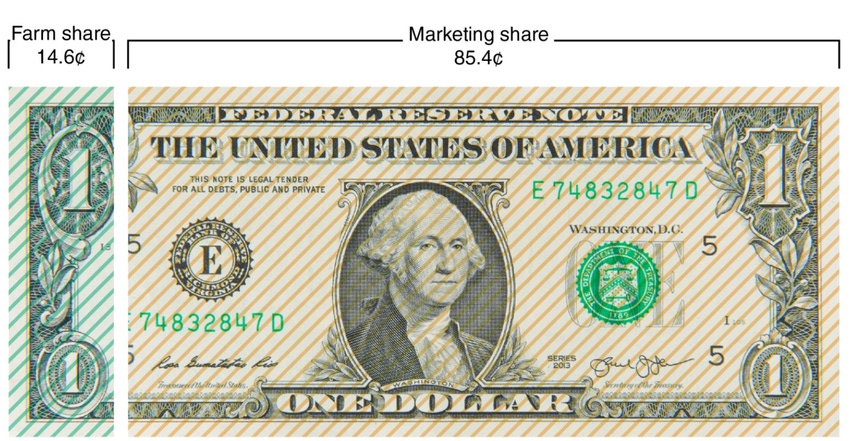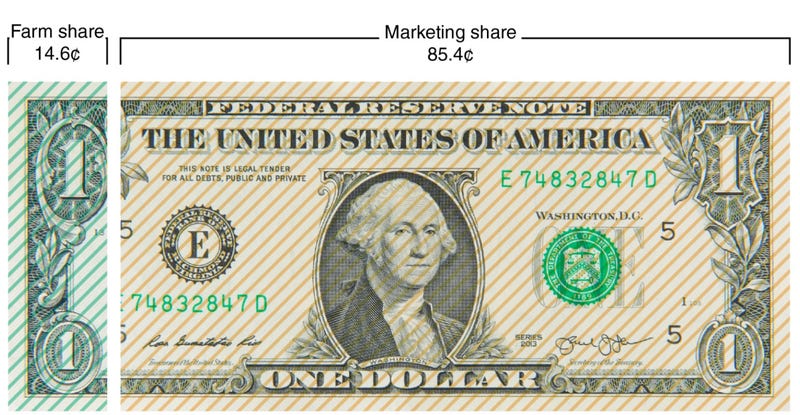Farmer share of food dollar declines
Increases in food-away-from-home spending by consumers drives down farmer share of food dollar.

For every dollar American consumers spend on food, U.S. farmers and ranchers earn just 14.6 cents, according to a report released recently by the U.S. Department of Agriculture's Economic Research Service (ERS).
This value for 2017 marks a 17% decline since 2011 and is the smallest portion of the American food dollar farmers have received since USDA began reporting these data in 1993. The remaining 85.4 cents cover off-farm costs, including processing, wholesaling, distribution, marketing and retailing.
“Even though family farmers and ranchers are more productive today than they have ever been, they’re taking home a smaller and smaller portion of the American food dollar,” National Farmers Union president Roger Johnson said.
Since the previous year, farm production costs per food dollar remained constant at 7.8 cents in 2017 and are still at their lowest level since 2002. Foodservice costs per food dollar rose to 36.7 cents in 2017, increasing for the ninth consecutive year since 2008, when these costs were 29.0 cents. Food packaging costs were 2.3 cents in 2017, an all-time low since the beginning of this series; packaging costs were recorded at their highest level of 4.2 cents in 2002.
Although 2017 was the sixth consecutive year the farm share dropped, the decline was smaller than in 2016 (4.5%) and 2015 (9.9%). Unlike in the previous two years, average prices received by U.S. farmers went up in 2017, as measured by the Producer Price Index for farm products.
The decline in farm share also coincides with six consecutive years of increases in the share of the food dollar going to the foodservice industry. Increases in food-away-from-home spending by consumers drives down the farm share of the food dollar. “Farmers receive a smaller percentage from eating-out expenditures because food makes up a smaller share of total costs due to restaurants’ added costs for preparing and serving meals,” ERS said.
Johnson said the data don’t paint the full picture of the farm economy, “but when considered in the context of depressed commodity prices, plummeting incomes, rising input costs and deteriorating credit conditions, it is certainly clear that we are in the midst of an agricultural financial crisis.”
Johnson added, “Conditions for farmers have been eroding since 2011, and there’s only so much longer they can hold on. Many have already made the heartbreaking decision to close up shop; in just the past five years, the United States lost upwards of 70,000 farm operations. As a country with a growing population and growing nutritional needs, we can’t afford to lose many more. We sincerely hope this startling report will open policy-makers’ eyes to the financial challenges family farmers and ranchers endure on a daily basis and convince them to provide the support they so desperately need.”

This dollar bill shows the farm and marketing cost split in a typical $1 food purchase. The farm share of the food dollar is the share received by farmers from the sales of raw food commodities. The marketing share is the remainder accruing to food supply chain industries involved in all post-farm activities that culminate in final market food dollar sales.
About the Author(s)
You May Also Like





